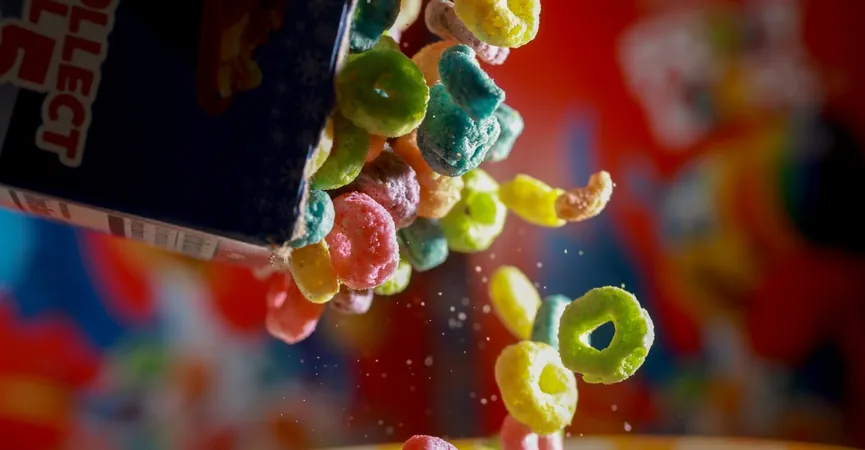
Is It Time to Toss Out Your Child's Froot Loops? The Surprising Truth About Food Dyes!
2025-01-23
Author: Wei
What’s the Deal with Food Dyes?
Synthetic food dyes serve the simple purpose of enhancing the appearance of food, and there are currently nine in use in the United States. The recent ban on Red No. 3 will bring that number down to eight by 2027. These dyes pop up in many products, from candies to snacks, raising questions about their safety.
A pivotal moment came in the 1980s when research linked Red No. 3 to an increased risk of thyroid cancer in male rats. However, human studies have not demonstrated the same threat, with the FDA noting that the biological differences between rats and humans must be accounted for. Despite this, public health advocates have insisted on stricter controls, leading to the recent announcement from the FDA.
The link between food dyes and behavior, particularly in children with Attention Deficit Hyperactivity Disorder (ADHD), has led to heated debate. A review from California’s Office of Environmental Health Hazard Assessment identified associations between certain dyes and adverse neurobehavioral effects, such as increased hyperactivity in sensitive children. Yet, not all kids react the same way, and the scientific community acknowledges that more research is needed.
The Social Media Uproar and Misinformation
In recent times, the conversation around food dyes has exploded on social media platforms like TikTok and Instagram. Influencers have branded these dyes as 'toxic' and 'poisonous,' pressuring parents to eliminate them from their kids' diets entirely. However, the oversimplification of this message risks generating unnecessarily restrictive eating habits in children.
Experts warn against establishing a fear-based relationship with food, suggesting that being overly cautious about certain ingredients can lead to anxiety and panic during social eating situations, such as parties. In fact, some parents have reported that their children have difficulty even enjoying birthday cake due to strict dietary rules.
Moreover, this movement against dyes could inadvertently open the door to other, potentially harmful beliefs. The connection drawn by some influencers between food dye elimination and the eradication of ADHD reflects a dangerous narrative that pathologizes natural variations in neurodiversity.
The Path Forward: Embracing a Balanced Approach
Despite the ongoing debates around food dyes, experts agree that fostering a relaxed attitude toward food is essential. Instead of restrictive practices, families are encouraged to create an accepting environment where a variety of foods can be enjoyed. Registered dietitian Christy Harrison emphasizes the importance of flexibility in children's diets and discourages an overly cautious approach that could lead to disordered eating.
As discussions continue about how to keep children healthy and well-behaved, it is crucial for parents to be informed and to approach food with a balanced perspective. Allowing kids to indulge in treats occasionally, without fear of harm, is key to nurturing a healthy relationship with food.
In Summary
As the conversation around food dyes continues to grow, it's essential for parents to stay informed and consider both the science and the broader implications of dietary restrictions. Froot Loops may not be the enemy, but an approach grounded in love and understanding certainly is!



 Brasil (PT)
Brasil (PT)
 Canada (EN)
Canada (EN)
 Chile (ES)
Chile (ES)
 Česko (CS)
Česko (CS)
 대한민국 (KO)
대한민국 (KO)
 España (ES)
España (ES)
 France (FR)
France (FR)
 Hong Kong (EN)
Hong Kong (EN)
 Italia (IT)
Italia (IT)
 日本 (JA)
日本 (JA)
 Magyarország (HU)
Magyarország (HU)
 Norge (NO)
Norge (NO)
 Polska (PL)
Polska (PL)
 Schweiz (DE)
Schweiz (DE)
 Singapore (EN)
Singapore (EN)
 Sverige (SV)
Sverige (SV)
 Suomi (FI)
Suomi (FI)
 Türkiye (TR)
Türkiye (TR)
 الإمارات العربية المتحدة (AR)
الإمارات العربية المتحدة (AR)